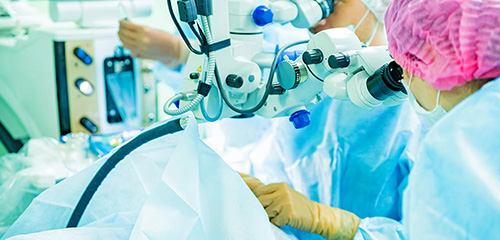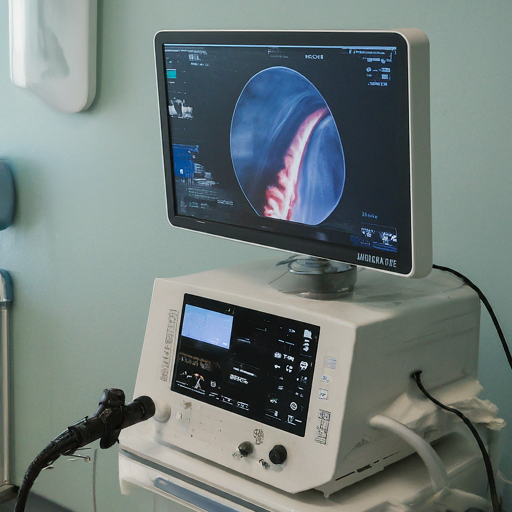Contents
- 1 Understanding Hiatal Hernias
- 2 Risk Factors and Complications
- 3 The Significance of Hiatal Hernia Endoscopy
- 4 Unveiling the Extent of Hiatal Hernias
- 5 Detecting Potential Complications
- 6 Contrasting Endoscopy with Alternative Diagnostic Methods
- 7 Preparing for Hiatal Hernia Endoscopy
- 8 Addressing Concerns and Questions
- 9 The Endoscopy Procedure
- 10 Recovery and Post-Procedure Care
- 11 Potential Complications
- 12 Adherence to Post-Procedure Guidelines
- 13 Prevention of Hiatal Hernias
Imagine a world where heartburn, acid reflux, and persistent indigestion no longer dictate your life, where the fear of food choices and the discomfort of digestive woes fade into the background. This world is within reach, thanks to the advancements in diagnostic procedures like hiatal hernia endoscopy.
Hiatal hernias, a common condition affecting millions worldwide, occur when part of the stomach expands through the diaphragm, the muscle dividing the chest and the abdomen. This protrusion can lead to a range of unpleasant symptoms, including heartburn, chest pain, and difficulty swallowing.
While hiatal hernias may not sound alarming, they can significantly impact your quality of life. The good news is that hiatal hernia endoscopy offers a clear lane to diagnosis and treatment, empowering you to take control of your digestive health.
Understanding Hiatal Hernias

Hiatal hernias, though common, can be a source of discomfort and digestive distress. Before investigating the diagnostic world of endoscopy, let’s embark on a journey to understand the anatomy of hiatal hernias and their underlying causes.
Anatomy of the Esophagogastric Junction (EGJ)
The esophagogastric junction (EGJ) is a crucial anatomical structure that marks the transition between the esophagus and the stomach. It serves as a gatekeeper, preventing stomach acid from refluxing into the esophagus, causing heartburn and other symptoms.
The EGJ comprises several muscle layers that coordinate to maintain its integrity. These muscles include:
- The esophageal sphincter: This ring-like muscle forms the uppermost part of the EGJ, constricting to prevent the backflow of stomach acid.
- The diaphragmatic crura: These muscular bands anchor the esophagus to the diaphragm, providing additional support to the EGJ.
- The phrenicoesophageal ligament connects the esophagus to the diaphragm, further strengthening the EGJ’s structure.
When these muscles weaken or the diaphragm develops an opening, the EGJ loses its ability to function effectively, developing hiatal hernias.
Types of Hiatal Hernias
Hiatal hernias come in different forms, each with its unique characteristics. Understanding these variations is essential for tailoring appropriate diagnostic and treatment strategies.
- Sliding Hiatal Hernia: The most common type, accounting for about 95% of cases, occurs when the upper part of the stomach slides through the weakened hiatus in the diaphragm.
- Rolling Hiatal Hernia: This less frequent type involves rolling the upper part of the stomach and the EGJ into the chest cavity.
- Paraesophageal Hiatal Hernia: The rarest type occurs when a portion of the stomach or intestines protrudes through a hole in the diaphragm, separate from the hiatus.
Each type of hiatal hernia presents with varying severity and symptoms. Sliding hiatal hernias are often associated with heartburn and acid reflux, while rolling and peri-esophageal hernias may cause more terrible symptoms due to the entrapment of organs.
Risk Factors and Complications
Hiatal hernias can pose potential risks and complications if left untreated. Understanding these factors is crucial for preventive measures and timely intervention.
Risk Factors

- Age: Hiatal hernias are more prevalent in older individuals, with the risk increasing after age 50.
- Obesity: Excess weight puts further pressure on the diaphragm, increasing the likelihood of a hiatal hernia.
- Chronic coughing can weaken the diaphragm, contributing to hernia formation.
- Smoking: Smoking can damage connective tissues, including those in the diaphragm, making it more susceptible to herniation.
Complications
- Esophagitis: Prolonged exposure to stomach acid can inflame the esophagus, leading to esophagitis.
- Barrett’s Esophagus: Chronic esophagitis can progress to Barrett’s esophagus, a precancerous condition.
- Strictures: Scarring from esophagitis can narrow the esophagus, causing difficulty swallowing.
- Bleeding: In rare cases, severe hiatal hernias can cause bleeding from the esophagus or stomach.
Timely diagnosis and managing hiatal hernias can help prevent these complications and improve overall digestive health.
The Significance of Hiatal Hernia Endoscopy
Hiatal hernias can be a source of mystery and uncertainty, leaving individuals wondering about the cause of their digestive discomfort. This is where hiatal hernia endoscopy steps in, shedding light on the underlying condition and paving the way for effective treatment.
Endoscopy is a nominally invasive diagnostic procedure that allows doctors to visualize the interior of the digestive tract using a thin, flexible tube equipped with a camera and light (endoscope). In the case of hiatal hernias, endoscopy plays a pivotal role in confirming the diagnosis, assessing its severity, and identifying potential complications.
Unveiling the Extent of Hiatal Hernias
Hiatal hernias vary in severity, ranging from small protrusions to more significant herniations. Endoscopy directly visualizes the hernia, enabling physicians to assess its size and extent accurately. This information is crucial for deciding the appropriate treatment plan and monitoring the progression of the hernia over time.
Detecting Potential Complications
Beyond confirming the presence of a hiatal hernia, endoscopy also serves as a valuable tool for detecting potential complications. Esophagitis, Barrett’s esophagus, and strictures can all be identified during an endoscopy, allowing for early intervention and preventing more severe complications.
Contrasting Endoscopy with Alternative Diagnostic Methods
While other diagnostic methods, such as barium swallows and X-rays, may be used to evaluate hiatal hernias, endoscopy offers a significant advantage. Endoscopy provides a direct, real-time visualization of the esophagus and stomach, allowing for a more comprehensive assessment of the condition. Additionally, endoscopy can be used to perform biopsies collecting tissue samples for further analysis.
Hiatal hernia endoscopy is a powerful diagnostic tool that provides invaluable insights into the nature and severity of hiatal hernias. Its ability to visualize the digestive tract, assess the extent of the hernia, and detect complications makes it indispensable.
Preparing for Hiatal Hernia Endoscopy
Hiatal hernia endoscopy requires careful formulation to ensure a smooth and successful procedure. By understanding the pre-procedure guidelines, individuals can alleviate anxiety and promote a positive experience.
Dietary Restrictions
During endoscopy, dietary restrictions are essential to ensure a clear view of the digestive tract. Typically, individuals are advised to avoid solid food for 6 to 8 hours before the procedure. This allows the stomach to empty, providing optimal visibility for the endoscopist.
In addition to solid foods, certain liquids may also need to be restricted. Clear liquids, such as water, black coffee, or clear tea, are generally permitted up to 2 hours before the procedure. However, individuals should consult their physician for specific instructions regarding their dietary restrictions.
Medication Adjustments
Certain medications may interfere with the endoscopy procedure and need to be adjusted or temporarily discontinued. These include:
- Blood thinners: Medications like aspirin, warfarin, or clopidogrel may increase the risk of bleeding during the procedure. Adjustments to the dosage or alternate medications may be necessary.
- Diabetes medications: Oral hypoglycemic agents may need to be adjusted to prevent hypoglycemia (low blood sugar) during the procedure.
- Anti-inflammatory medications: Nonsteroidal anti-inflammatory drugs (NSAIDs) like ibuprofen or naproxen can aggravate the stomach lining and must be stopped before the endoscopy.
Individuals should consult their physician to determine which medications must be adjusted or discontinued and for how long.
Sedation Options:
Endoscopy is typically performed using sedation to minimize discomfort and anxiety during the procedure. The options for sedation include:
- Midazolam: This intravenous medication induces drowsiness and relaxation.
- Propofol: This intravenous medication provides more profound sedation and may cause temporary loss of consciousness.
The choice of sedation depends on individual factors such as age, overall health, and anxiety levels.
Addressing Concerns and Questions
Before the endoscopy, individuals may have questions or concerns about the procedure. Discussing these with their physician to receive clear and reassuring explanations is essential. Common concerns include:
- Pain: While endoscopy is generally not painful, discomfort may be experienced during the endoscope’s insertion. Sedation helps alleviate any discomfort.
- Complications: Complications from endoscopy are rare but can include bleeding, infection, or perforation.
- Recovery: Recovery from endoscopy is typically quick, and most patients can return to customary activities within one or two days.
By addressing these concerns and granting comprehensive information, physicians can help alleviate anxiety and promote a positive experience for individuals undergoing hiatal hernia endoscopy.
The Endoscopy Procedure
The hiatal hernia endoscopy procedure itself is relatively straightforward and well-tolerated. Understanding the steps required can help alleviate anxiety and promote a positive experience.
- Preparation: Before the procedure begins, you will be asked to remove any jewelry or clothing that may affect the endoscopy. You will also need to change into a hospital gown. An intravenous (IV) line will be included in your arm to administer sedation and medications as needed. Your vital signs, such as heart rate, blood pressure, and oxygen levels, will be observed throughout the procedure.
- Sedation: Sedation is typically administered to minimize discomfort and anxiety during the endoscopy. The sedation type will depend on the patient’s needs and preferences.
- Insertion of the Endoscope: The endoscopist will gently insert the endoscope inside your mouth and down your throat. The endoscope is thin and flexible and will not cause any pain. It will slowly advance through your esophagus and stomach, allowing the endoscopist to visualize the lining of your digestive tract.
- Visualization and Assessment: The endoscopist will carefully examine the lining of your esophagus and stomach, looking for abnormalities such as hernias, inflammation, or ulcers. The endoscope can also take tissue biopsy samples for further analysis. Biopsies can help diagnose conditions such as Barrett’s esophagus or Helicobacter pylori infection.
- Removal of the Endoscope: Once the endoscopist has completed the examination, it will be slowly removed from your mouth. You may experience a slight gagging sensation as the endoscope is removed.
- Recovery: After the endoscopy, you will be monitored briefly to ensure you recover well. You can go home once your vital signs are stable and fully awake. Most people can continue normal activities within a day or two after the endoscopy. However, you may experience throat discomfort or bloating, which should subside within a few days.
Recovery and Post-Procedure Care
Following hiatal hernia endoscopy, a smooth recovery is essential to ensure optimal healing and inhibit complications. Understanding the post-procedure care guidelines will empower individuals to navigate this phase effectively.
Throat Discomfort

Due to the insertion of the endoscope, throat discomfort is expected. This discomfort resembles a sore throat and usually subsides within a few days. To alleviate throat discomfort, individuals can:
- Gargle with warm salt water: This helps decrease inflammation and promote healing.
- Suck on lozenges or hard candy: This increases saliva production, which can soothe the throat.
- Avoid irritants: Avoid smoking, alcohol, and caffeine, as these can further irritate the throat.
- Dietary Recommendations: Nourishing the Digestive Tract
Following endoscopy, individuals may experience mild bloating or changes in bowel habits. A bland diet is often recommended for a few days to promote digestive comfort. This typically includes:
- Soft, easily digestible foods: Bread, crackers, rice, cooked vegetables, and lean protein are suitable choices.
- Avoid spicy or greasy foods: These irritate the digestive tract and worsen discomfort.
- Adequate hydration: Consume plenty of fluids, such as water or clear broth, to stay hydrated and support healing.
Gradually reintroduce regular foods as tolerated over a week. If any persistent digestive discomfort occurs, consult with your physician.
Potential Complications
While rare, certain complications may arise. Be vigilant for signs of:
- Bleeding: Mild bleeding may occur from the biopsy site, but excessive bleeding is uncommon. If you experience bright red or black stools, contact your physician immediately.
- Infection: Signs of infection consist of fever, chills, and abdominal pain. If you encounter any of these symptoms, contact your physician promptly.
- Perforation: This is a rare but severe complication that occurs when the endoscope creates a hole in the wall of the digestive tract. Symptoms include severe abdominal pain, fever, and difficulty breathing. If you experience any of these symptoms, seek immediate medical attention.
Adherence to Post-Procedure Guidelines
By following the recommended post-procedure care guidelines, individuals can promote optimal healing, minimize discomfort, and reduce the risk of complications. Remember to consult with your physician for specific instructions and address any concerns.
Prevention of Hiatal Hernias
You can prevent their recurrence by adopting lifestyle modifications that promote overall digestive health. These preventive measures empower individuals to take control of their stomach health and reduce the risk of digestive discomfort.
Maintaining a Healthy Weight
Excess weight is a considerable risk factor for hiatal hernias. The additional pressure exerted on the diaphragm by excess weight can weaken it, increasing the likelihood of hernia formation. Maintaining a healthy weight through a reasonable diet and regular exercise is crucial for preventing hiatal hernias.
Avoiding Heavy Lifting
Heavy lifting can strain the diaphragm, making it more susceptible to herniation. Individuals should avoid lifting heavy objects or strenuous activities that strain the abdominal muscles. Proper lifting techniques should be employed to minimize strain when lifting is necessary.
Managing Chronic Coughing
Chronic coughing can strain the diaphragm repeatedly, increasing the risk of hiatal hernias. Addressing the underlying cause of chronic coughing, such as allergies, asthma, or smoking cessation, is essential for preventing hiatal hernia formation.
Adopting a Heartburn-Friendly Diet
Heartburn, a common symptom of hiatal hernias, can be exacerbated by confident dietary choices. Avoiding spicy, greasy, and acidic foods, as well as limiting caffeine and alcohol consumption, can help reduce heartburn and promote digestive comfort.
Incorporating Regular Exercise
Regular exercise assists in weight management and promotes overall digestive health. Exercise strengthens the muscles that support the diaphragm, reducing the risk of hernia formation. Aim for at least thirty minutes of moderate-intensity exercise most days of the week.
Hiatal hernia endoscopy stands as a beacon of hope, offering a clear path to diagnosis and treatment. This minimally invasive procedure sheds light on the mysteries of hiatal hernias.
The significance of endoscopy unfolds as it illuminates the extent of hiatal hernias, detects complications, and contrasts with alternative diagnostic methods. Its ability to provide real-time visualization and perform biopsies makes it an indispensable tool in managing hiatal hernias effectively.
DISCLAIMER: All content on this website is presented solely for educational and informational objectives. Do not rely on the information provided as a replacement for advice, diagnosis, or treatment from a qualified medical expert. If you are pregnant, nursing, or have any preexisting medical concerns, talk to your doctor before using any herbal or natural medicines.
REFERENCES
- Verywell Health: https://www.verywellhealth.com/diagnosing-hiatal-hernias-1742604
- https://www.laparoscopyhospital.com/frequently_asked_question_about_hiat
